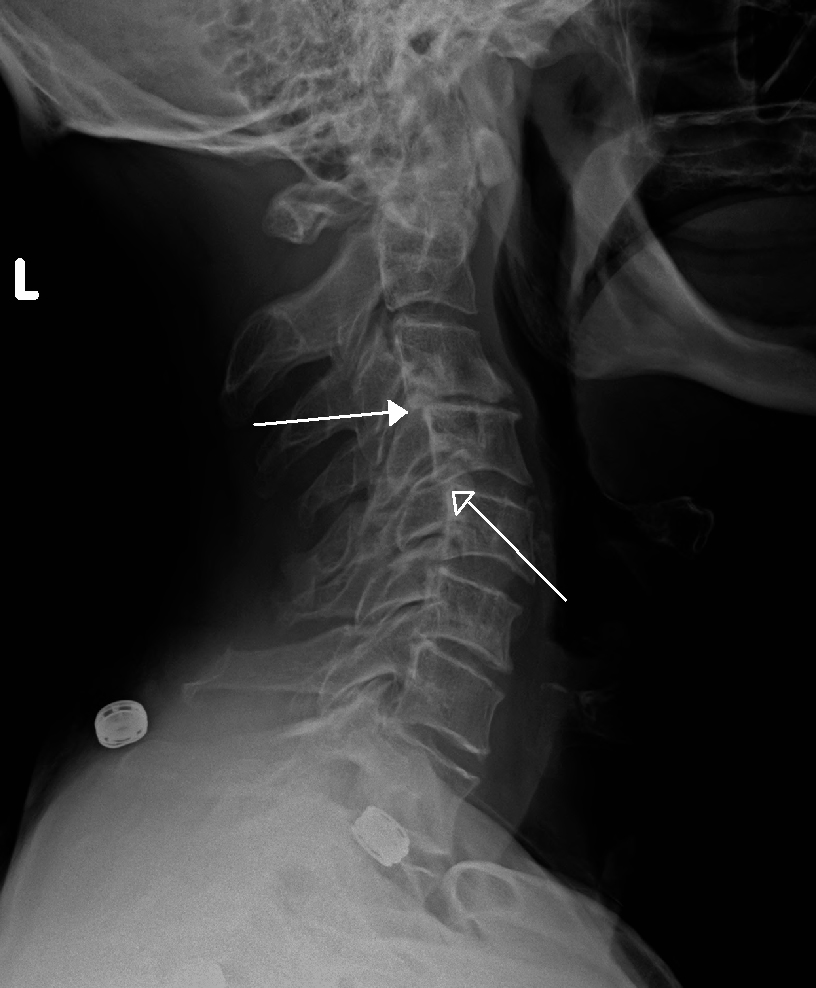What are Bone Spurs (Osteophytes)?
Osteophytes, more commonly known as bone spurs, occur when there is bone on bone friction. This causes the body to build up calcium in an effort to strengthen the bones to endure this friction being created. If these bone spurs grow large enough, they can begin to affect surrounding tissue, causing discomfort.
 Description
Description
English: Grade 1 retrolistheses of C3 on C4 and C4 on C5
Date 26 March 2012
Source Own work
Author James Heilman, MD
Signs and Symptoms of Osteophytes
Osteophytes along the spinal cord can cause acute pain in the region, numbness in the extremities, and muscle weakness. If the bone spur develops on one of the vertebrae in cervical spine, stiffness in the neck may be felt, along with headaches, pain, numness, and tingling.
If the bone spur is located in the thoracic spine, the pain can be felt in the center of the back, or rib cage. With Lumbar bone spurs, the pain can be felt in the lower back, accompanied by stiffness, numbness, and muscle weakness.
Surgical Treatment Options
A bone spur can be treated with the following procedures:
- Laminotomy
- Discectomy
- Foraminotomy